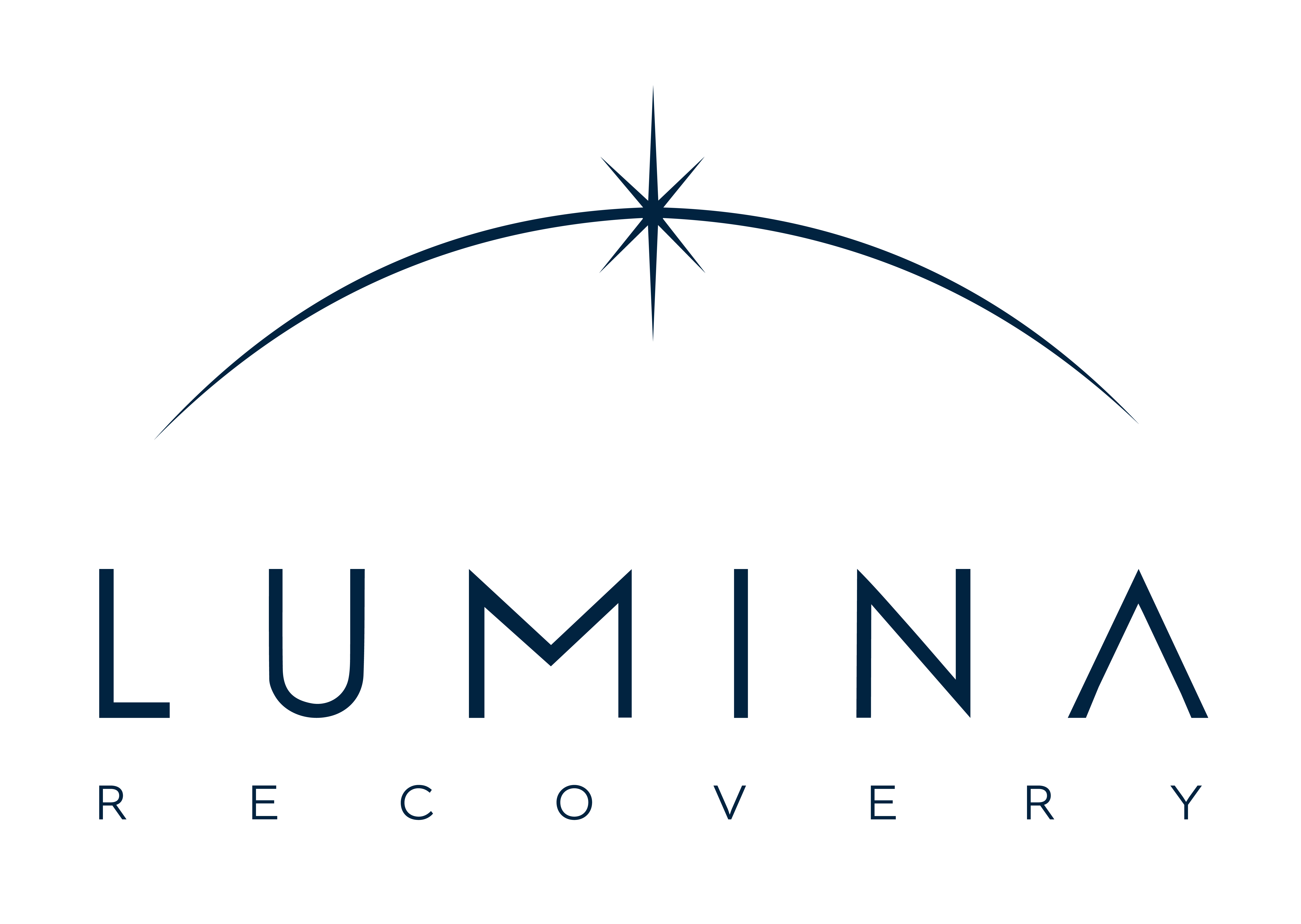
Our Addiction Resources
Navigating the world of addiction and recovery can be overwhelming. We’re here to provide clear, compassionate education and guidance. From practical advice for maintaining sobriety to informational guidance on the long-term effects of substance abuse, our content is a beacon of hope and understanding.
Our Team is Ready are ready to take your call
Call us Today!
or we can call you. Fill out form below
Our Blog

What Is Abstinence in Addiction Recovery?
Abstinence in addiction recovery refers to the complete avoidance of substance use, whether it’s alcohol, drugs, or other addictive behaviors. It is a fundamental approach for individuals seeking to break free from the cycle of addiction and begin a healthier, more stable life.
By committing to abstinence, individuals eliminate substances from their lives, allowing the body and mind to recover and preventing the risk of relapse.
The Role of Abstinence in Recovery
Abstinence plays a crucial role in both physical and mental recovery. When someone becomes abstinent from alcohol or abstains from drugs, their body begins to heal from the harmful effects of substance use. The liver repairs itself after alcohol abuse, while the brain restores neurotransmitter balance disrupted by drugs.
The benefits to abstinence extend beyond physical recovery. Psychologically, abstinence provides clarity of thought, emotional stability, and the opportunity to address underlying mental health conditions, such as anxiety or depression, that may have contributed to substance use.
Individuals often find that abstinence allows them to develop healthier coping mechanisms, improving their ability to handle stress and life’s challenges.
Additionally, abstinence creates a foundation for growth in other areas of life, such as relationships and career development. By removing the distractions and harmful effects of substances, individuals can focus on building a more fulfilling, substance-free life.
Common Challenges of Abstinence
While the positives of abstinence are numerous, the journey is not without challenges. One of the most significant hurdles in early recovery is managing withdrawal symptoms.
Depending on the substance, withdrawal can include physical discomfort such as nausea, headaches, and tremors, as well as psychological symptoms like anxiety and depression. These symptoms can make it tempting to return to substance use, especially in the absence of a strong support system.
Cravings, often triggered by environmental cues, present another challenge. These intense desires to use substances can be triggered by environmental cues, such as visiting places associated with past use or encountering individuals who are still using.
Emotional struggles like loneliness, fear, or a lack of confidence in one’s ability to remain abstinent can also pose significant challenges.
Social and environmental factors can further complicate abstinence. A lack of understanding or support from family and friends may lead to feelings of isolation. Societal pressures, like drinking in social settings, often challenge individuals striving to stay abstinent from alcohol or other substances.
Tools and Strategies to Maintain Abstinence
Maintaining abstinence requires dedication and the right strategies. Therapy is one of the most effective tools in this journey. Cognitive behavioral therapy (CBT) helps individuals identify and change negative thought patterns that lead to substance use, while family therapy fosters open communication and strengthens support systems among loved ones.
Support groups like Alcoholics Anonymous (AA) and Narcotics Anonymous (NA) provide a sense of community, allowing individuals to share their experiences and receive encouragement from those who have faced similar challenges. These groups often emphasize the positives of abstinence, reinforcing the benefits of staying substance-free.
Structured treatment plans, such as inpatient or outpatient programs, are also invaluable. These programs offer accountability, routine, and professional guidance tailored to an individual’s needs. Techniques like mindfulness exercises, stress management, and alternative activities (e.g., exercise, art therapy) can help individuals cope with cravings and triggers.
Developing strong coping mechanisms is another essential strategy. This includes learning to recognize and avoid triggers, practicing self-care, and setting healthy boundaries in relationships. Creating a positive, supportive environment is key to maintaining abstinence and fostering long-term recovery.

Benefits of Sustained Abstinence
The benefits to abstinence are far-reaching, positively impacting nearly every aspect of life. Physically, abstinence allows the body to heal and recover. Brain function improves, energy levels increase, and the risk of chronic health issues, such as liver disease and cardiovascular problems, decreases. For those who commit to abstinence from drugs, these physical improvements can be particularly dramatic and life-changing.
Emotionally, abstinence fosters greater stability and resilience. Without the influence of substances, individuals often find it easier to process emotions and develop healthy coping strategies. This emotional clarity can lead to personal growth and better decision-making.
Socially, the positives of abstinence include the ability to rebuild and strengthen relationships that may have been strained by addiction. Trust is restored, and connections become more meaningful and supportive. Financially, abstinence eliminates the costs associated with substance use, freeing up resources for healthier and more rewarding pursuits.
Overall, sustained abstinence opens the door to a life of greater happiness, health, and fulfillment.
5 Practical Tips for Starting Your Abstinence Journey
- Set achievable goals. Begin with small, realistic objectives, such as, remaining abstinent for a day, a week, or a month. Make sure to celebrate your progress along the way.
- Build a supportive environment. Surround yourself with people who encourage your sobriety. This might mean seeking out new social groups or avoiding triggers in your current environment.
- Seek professional help. Professional guidance can make a significant difference. Detox programs provide a safe and supportive environment for transitioning to abstinence, while CBT equips individuals with the tools to maintain it.
- Practice self-care. Prioritize activities that promote physical and mental well-being, such as regular exercise, healthy eating, and mindfulness practices.
- Stay connected. Engage with support groups or therapy sessions regularly to stay motivated and maintain accountability.
Find Help for Abstinence With Lumina Recovery
Abstinence from drugs and alcohol is a transformative journey that fosters healing, emotional clarity, and personal growth. By committing to this path, you can experience the positives of abstinence, such as improved physical health, stronger relationships, and a renewed sense of purpose.
At Lumina Recovery, we provide specialized services to support you in this journey. Our detox programs offer a safe and comfortable environment to start your recovery, while cognitive behavioral therapy (CBT) helps you develop the tools to maintain abstinence and build a healthier future.
Contact us to learn how we can help you achieve lasting recovery and rediscover the joy of a substance-free life.

Post-Holiday and New Year’s Depression: What It Is and How to Cope
The holiday season is often a whirlwind of celebrations, social gatherings, and festive traditions. But when the festivities come to an end, many people find themselves feeling low, overwhelmed, or even hopeless.
This phenomenon, often referred to as post-holiday depression or New Year’s depression, is a common experience for those adjusting to the return of routine after an emotionally charged season.
Understanding the causes of post-holiday blues depression, recognizing the signs, and learning how to cope can make this time of year easier. Whether you’re struggling with feeling depressed after the New Year or supporting a loved one, there are ways to navigate these challenges with confidence and care.
What Is Post-Holiday and New Year’s Depression?
Post-holiday depression refers to feelings of sadness, fatigue, and stress that arise after the excitement of the holiday season fades. While many experience a temporary dip in mood, others feel the effects of new year depression more intensely.
The pressure to meet expectations, financial strain, or even the abrupt change in routine can contribute to this emotional downturn. Unlike fleeting sadness, post-holiday blues depression can persist and affect daily functioning if not addressed.
Temporary Blues vs. Clinical Depression
It’s important to differentiate between temporary blues and clinical depression. Post-holiday depression may include feeling unmotivated or down for a few days to weeks. However, if these feelings last for over two weeks or interfere with daily activities, they could signal clinical depression. Understanding how long post-holiday depression lasts for most people can help set expectations for recovery.
Contributing Factors
Several factors can contribute to post-holiday and New Year’s depression, ranging from emotional and psychological challenges to the physical toll of the season’s festivities.
Emotional and Psychological Aspects
The holidays can be emotionally charged, often bringing both joy and stress. Unresolved family dynamics or unmet expectations can lead to feelings of disappointment or inadequacy.
Impact of Social Media Comparisons
Scrolling through social media during the holidays can amplify feelings of inadequacy. Seeing curated images of others’ “perfect” celebrations can make you feel that your experience fell short, deepening post-holiday blues depression.
Role of Physical Health and Lifestyle
Overindulgence in holiday foods, alcohol, and late nights disrupt normal routines. Returning to a more structured schedule after the New Year can feel daunting, contributing to new year depression.
Recognizing Symptoms
Recognizing the symptoms of post-holiday and New Year’s depression is the first step in addressing it effectively and seeking the support you need.
Emotional Signs
New Year’s depression can manifest as persistent sadness, irritability, or feelings of hopelessness. These emotions may also make you feel less interested in activities you usually enjoy.
Physical Manifestations
Fatigue, changes in appetite, and disruptions to your sleep patterns are common physical symptoms of post-holiday depression. Headaches or general aches may also accompany these feelings.
Behavioral Indicators
Withdrawal from social activities, procrastination, or neglecting responsibilities are behavioral signs of depression. Recognizing these early can help you seek support before symptoms worsen.
4 Effective Coping Strategies
Adopting effective coping strategies can help you manage post-holiday and New Year’s depression, allowing you to regain balance and focus in your daily life.
1. Setting Realistic Expectations
One of the best ways to manage post-holiday blues depression is to set achievable goals.
- Prioritize tasks. Identify what’s most important and let go of unnecessary obligations.
- Learn to say no. It’s okay to decline invitations or requests that feel overwhelming.
2. Maintaining Physical Health
Physical well-being is closely tied to mental health.
- Exercise regularly. Even a brisk walk can boost endorphins and improve mood.
- Focus on balanced nutrition. Avoid overly restrictive diets and focus on incorporating whole, nutrient-dense foods.
3. Enhancing Social Connections
While you may feel like withdrawing, staying socially engaged can combat feelings of isolation.
- Plan gatherings. Spend time with friends or family members who support and uplift you.
- Try to volunteer. Helping others can provide a sense of purpose and community, easing feelings of loneliness.
4. Practicing Mindfulness and Relaxation Techniques
Practicing mindfulness helps you stay present and reduce stress.
- Practice meditation. Spend 5–10 minutes each day focusing on your breath or using a guided meditation app.
- Engage in hobbies. Creative outlets like painting, knitting, or journaling can be therapeutic and distracting from negative thoughts.

When to Seek Professional Help
While many can navigate post-holiday and New Year’s depression with self-care, persistent or severe symptoms may indicate the need for professional help.
Identifying Persistent or Severe Symptoms
If symptoms persist for more than two weeks or worsen, seeking professional help is crucial. Feeling unable to manage daily life, experiencing excessive fatigue, or having thoughts of self-harm are signs you may need additional support.
Available Treatment Options
Options such as cognitive behavioral therapy (CBT), which focuses on identifying and changing negative thought patterns, and dialectical behavior therapy (DBT), which helps develop emotional regulation and coping strategies, offer structured frameworks for recovery.
Joining a support group can offer a sense of community and shared understanding. Connecting with others who have experienced similar feelings can provide validation, reduce isolation, and foster hope for recovery.
Supporting Loved Ones
Supporting loved ones experiencing post-holiday and New Year’s depression requires understanding, empathy, and a willingness to help them navigate their emotional challenges.
Assisting Someone Experiencing Depression
If someone you care about is struggling with post-holiday depression, your support can make a difference.
- Be present. Listen without offering solutions or judgment.
- Encourage communication. Let them know it’s okay to talk about their feelings.
Promoting Awareness of Mental Health
Reducing stigma around mental health encourages people to seek help. Share articles, resources, or even attend therapy sessions with your loved one if they’re comfortable.
Get Help for Post-Holiday and New Year’s Depression With Lumina Recovery
Post-holiday and New Year’s depression can leave many feeling lost or overwhelmed, but understanding its symptoms and learning to cope can pave the way for healing. Whether you’re struggling with post-holiday blues depression or feeling depressed after the New Year, remember that help is available.
At Lumina Recovery, our dual diagnosis programs are specifically designed to treat depression and related mental health conditions, ensuring that both the root cause and its effects are addressed. Additionally, our individual therapy sessions provide personalized care to help you overcome the challenges of post-holiday and new year depression.
Don’t let the season’s end diminish your mental well-being. Contact us today to learn how we can support you in reclaiming joy and balance in your life.

What Is a Typical Day in Inpatient Rehab?
Recovering from addiction is a courageous journey, and inpatient drug and alcohol rehab is designed to provide the structured environment necessary for healing. Addiction often impacts every aspect of a person’s life—physically, mentally, emotionally, and socially.
Inpatient rehab programs are uniquely equipped to address these multifaceted challenges by combining evidence-based treatments with holistic care approaches. They offer a safe, supportive space free from external distractions, allowing individuals to focus fully on their recovery.
The Importance of Structure
One of the key benefits of inpatient rehab is its structured nature. A carefully designed schedule helps instill a sense of stability and routine, which can be especially important for individuals coming out of chaotic or unstable environments.
While every rehab facility is different, most programs include a combination of individual therapy, group therapy, wellness activities, and time for personal reflection. These elements work together to foster growth, self-awareness, and the development of healthy coping mechanisms.
Tailored Treatment for Unique Needs
The activities and treatments offered in rehab are often tailored to each individual’s needs. This personalized approach ensures that everyone receives the care and attention required for their unique circumstances. For example, some individuals may benefit from trauma-focused therapies, while others may respond better to holistic methods such as mindfulness, yoga, or art therapy.
Additionally, healthy meals and time for self-care further support physical and emotional healing. These components create an environment where individuals can regain their strength, confidence, and sense of purpose.
So what is rehab like on a day-to-day basis? We’ll explore a typical day in rehab in the graphic below.
Take the First Step With Lumina Recovery
While the idea of rehab can feel daunting, understanding what to expect can help alleviate fear and uncertainty. The daily routine in rehab is not about imposing restrictions but rather about creating a framework for lasting recovery. At Lumina Recovery, we recognize that every individual’s journey is unique. That’s why we focus on crafting personalized treatment plans and providing a range of services to meet diverse needs.
If you or a loved one is ready to take the first step toward a healthier, more fulfilling life, Lumina Recovery is here to guide you. Contact us today to learn how we can help you start your recovery journey.


Why You Should Make Sobriety Your New Year’s Resolution
The New Year marks a time for reflection and renewal, offering the perfect chance to set meaningful goals for personal growth. It’s an opportunity to make changes that can positively shape your future. For many, setting New Year’s resolutions becomes a tradition—a way to embrace a New Year fresh start and improve their quality of life.
Choosing sobriety as your resolution is a transformative step. It’s a commitment to your health, relationships, and overall well-being. Whether you’re currently dealing with addiction or simply seeking a lifestyle change, getting sober can open the door to profound benefits.
As you consider your goals for the year ahead, reflect on how sobriety might fit into your vision for a healthier, happier future.
The Appeal of Sobriety in the New Year
Sobriety is becoming increasingly popular, especially as more Americans commit to reducing their alcohol consumption. In 2024, over 41% of Americans reported trying to drink less, marking a significant 7% increase compared to 2023.1
This trend is even more pronounced among younger generations. A remarkable 61% of Gen Z individuals were planning to drink less, a dramatic jump from 40% the year before. Millennials are following suit, with nearly half (49%) committed to reducing their alcohol intake, reflecting a 26% increase from the previous year.1
The rise of initiatives like Dry January mirrors this shift in attitudes toward alcohol. In 2024, participation in Dry January climbed to 22%, a 10% increase from the year prior. This shift is evident in consumer behavior, as alcohol purchases dropped by 24% within a single month, underscoring the growing cultural emphasis on moderation and sobriety.1
This trend is fueled by movements like “intermittent sobriety,” particularly embraced by Gen Z. These individuals are reshaping social norms around drinking, choosing to cut back for health, wellness, and clarity.
For those considering sobriety, the beginning of the year offers a perfect moment to embrace this cultural shift and align with the growing number of people prioritizing healthier choices.
The Comprehensive Benefits of Sobriety
The benefits of sobriety are far-reaching, positively impacting every area of life. Here’s how choosing to get sober can transform your health, mental state, and relationships.
Physical Health
Sobriety brings almost immediate physical benefits. Abstaining from alcohol allows the body to begin its natural healing process, reducing the strain on vital organs and promoting overall health.
Additionally, improved sleep quality and higher energy levels are common outcomes. Alcohol often disrupts sleep cycles, leaving people feeling fatigued and sluggish. Removing it from your routine allows your body to repair and recharge fully, making you feel more vibrant and capable.
Mental Health
Alcohol can contribute to mental health issues such as anxiety and depression. Removing it from your life creates space for emotional healing and stability.
Sobriety is linked to improved cognitive function, mental clarity, and emotional resilience. Many individuals report feeling more focused and positive after getting sober, finding that they can handle life’s challenges with greater ease.
Social and Financial Well-Being
Choosing sobriety often strengthens relationships. Without the haze of alcohol, communication improves and conflicts are less likely to arise. Being present and engaged allows you to build deeper, more meaningful connections with loved ones.
Financially, the benefits of sobriety are also significant. Cutting out alcohol-related expenses—like buying drinks or paying for late-night rides—can lead to substantial savings. These resources can then be redirected toward hobbies, travel, or other enriching experiences.

Overcoming Challenges in Maintaining Sobriety
While the benefits of sobriety are undeniable, the path to achieving it is not always easy. Anticipating and addressing common challenges can help you succeed in your journey.
Social events often revolve around alcohol, making it difficult for those who are newly sober. To navigate these situations, consider bringing your own non-alcoholic beverages or rehearsing polite ways to decline alcohol.
Surround yourself with supportive friends who respect your decision. Remember, setting New Year’s resolutions to embrace sobriety is a personal choice, and you owe no one an explanation.
One of the most effective ways to maintain sobriety is to connect with others who share your goals. Support groups and communities, both in-person and online, provide encouragement and accountability. Sharing experiences and learning from others can be incredibly empowering.
3 Practical Tips for Sustaining Sobriety
Maintaining sobriety can feel challenging, but with the right strategies and support, you can build a strong foundation for lasting success.
1. Setting Clear Goals
Establishing clear and achievable goals is crucial for success. SMART goal-setting, which stands for Specific, Measurable, Achievable, Relevant, and Time-Bound, can guide you in creating a realistic sobriety plan. For example, you might set a goal to remain alcohol-free for 30 days and then reevaluate and extend your commitment as you gain confidence.
2. Healthy Alternatives
Finding healthy activities to replace drinking can help distract from cravings and build positive habits. Exercise, creative hobbies, and mindfulness activities such as yoga or meditation are excellent choices. These activities not only fill your time but also contribute to your physical and mental well-being.
3. Professional Guidance
If you’re struggling to maintain sobriety, don’t hesitate to seek professional help. Therapists, counselors, and healthcare providers can offer personalized strategies and resources to support you. There’s no shame in asking for help—it’s a sign of strength and determination.
Start Your Journey to Sobriety With Lumina Recovery
Choosing sobriety as your New Year’s goal is a powerful step toward a healthier, more fulfilling life. By embracing this resolution, you’re choosing to prioritize yourself and your future.
At Lumina Recovery, we understand the challenges and rewards of getting sober. Our detox program offers a safe, medically supervised environment to help you begin your journey, while our residential inpatient program provides comprehensive care and support to build a strong foundation for lasting sobriety.
Take the first step toward achieving your New Year fresh start by reaching out to us today. Let’s work together to make sobriety your reality and help you unlock a brighter, healthier future.
Source:

How to Celebrate New Year’s Eve Sober
New Year’s Eve often brings to mind images of champagne toasts and late-night parties, but celebrating the holiday doesn’t have to involve alcohol. For those in recovery or anyone choosing sobriety, the holiday is a chance to embrace creativity and meaningful traditions.
Sober celebrations can be just as memorable and exciting while promoting your commitment to a healthier, happier lifestyle. Whether you’re planning a low-key evening or a lively gathering, here are some inspiring sober New Year’s Eve ideas to ensure a happy sober New Year.
1. Host a Sober Party
Hosting your own alcohol-free New Year’s Eve party is a fantastic way to create a safe and enjoyable environment for yourself and your guests.
Organize a game night. Engage your guests with fun games like trivia, charades, or strategy-based board games. These activities can keep everyone engaged and laughing throughout the evening.
Pick a unique theme. A themed party, such as a retro celebration or a masquerade ball, can add excitement and encourage creativity among guests.
Serve non-alcholic beverages. Offer a selection of creative winter mocktails like a gingerbread latte mocktail, pomegranate rosemary fizz, or spiced apple cider. Pair these drinks with tasty snacks and finger foods to keep the party lively.
2. Plan a Relaxing Self-Care Night
If a quiet night sounds more appealing, treat yourself to an evening of relaxation and reflection.
Watch your favorite movies or series. Curl up with a cozy blanket and revisit a beloved film or start a new TV show.
Pamper yourself. Create a spa-like experience at home with face masks, a warm bath, and soothing aromatherapy candles.
Reflect on the past year. Write down your accomplishments, challenges, and lessons learned. Journaling can help you set meaningful goals for the coming year.
3. Join a Sober Event or Gathering
Many communities now offer alcohol-free New Year’s Eve events, making it easier to celebrate in a supportive environment.
Attend local events. Look for family-friendly activities like fireworks shows, live music, or cultural festivals in your area.
Check out sober meetups. Recovery support groups and organizations often host sober NYE ideas like potlucks, dances, or game nights.
These gatherings can help you connect with others who share your commitment to sobriety, fostering a sense of community and belonging.
4. Get Active Outdoors
For a fresh and invigorating way to celebrate, consider spending time in nature for New Year’s Eve.
Go hiking or take a scenic walk. Bundle up and enjoy a moonlit hike or stroll to welcome the New Year in nature. Watching the sunrise on New Year’s morning can be a particularly uplifting experience.
Participate in a run. Many cities host New Year’s Eve fitness events like runs or walks, which combine fun and physical activity.
These outdoor activities provide a refreshing alternative to traditional celebrations and set a positive tone for the year ahead.

5. Volunteer and Give Back
Start the New Year with a spirit of generosity by spending the evening helping others.
Volunteer at a shelter or soup kitchen. Your time and kindness can make a big difference for those in need during the holiday season.
Organize a charitable activity. Gather friends or family to participate in a food or clothing drive, or deliver care packages to neighbors in need.
Giving back not only benefits your community but also reinforces feelings of gratitude and purpose, making for a truly happy sober New Year.
6. Create a Vision Board for the New Year
A vision board is a powerful tool for setting and visualizing your goals for the year ahead.
Gather craft supplies. Use magazines, markers, scissors, and glue to create a collage of images and words that represent your aspirations.
Focus on your priorities. Highlight areas like health, relationships, and personal growth, ensuring your goals align with your commitment to sobriety.
Crafting a vision board is an inspiring and enjoyable way to spend your sober New Year’s Eve.
7. Explore New Hobbies or Skills
Consider using New Year’s Eve as an opportunity to explore something new.
Cook a special meal. Experiment with a new recipe or create a gourmet dinner from scratch.
Try a creative project. Explore painting, knitting, or crafting to get in touch with your artistic side.
Take an online class. Learn something new, like a dance routine, a language, or photography tips.
Starting the New Year by expanding your skills and interests can be both exciting and fulfilling.
8. Celebrate with Live Entertainment
Immerse yourself in culture and creativity by attending or streaming live performances.
Check out local events. Attend a comedy show, concert, or theater production in your area.
Enjoy virtual entertainment. Many venues offer live-streamed events, allowing you to watch from the comfort of your home.
Live entertainment can provide laughter, inspiration, and joy, making it easy to honor your alcohol-free New Year’s Eve commitment.
9. Make Midnight Special
The final countdown to midnight is the highlight of New Year’s Eve, and there are countless ways to make it meaningful.
Create a gratitude ritual. Before midnight, share something you’re thankful for with loved ones.
Toast with a festive mocktail. Raise a glass of sparkling cider or another non-alcoholic drink as the clock strikes twelve.
Use music and confetti. Celebrate with upbeat tunes and a confetti shower to mark the start of a new chapter.
By making midnight a joyous and reflective moment, you’ll set a positive tone for the year to come.
Tips for Staying Sober and Positive During New Year’s Eve
Sticking to your sober NYE ideas may require extra planning, but it’s entirely possible to stay on track and enjoy the celebration.
Plan ahead. Decide on your activities and invite friends or family who support your sobriety.
Have an exit strategy. Be prepared to leave situations that feel triggering or uncomfortable.
Focus on the benefits of sobriety. Remind yourself of how good it feels to wake up refreshed and clear-headed on New Year’s Day.
Ring in a Meaningful New Year With Lumina Recovery
Celebrating New Year’s Eve sober is a powerful way to honor your commitment to recovery while enjoying meaningful activities and connections. You can host a vibrant sober party or reflect on your goals with self-care and gratitude. These are just a few of the countless ways to start the year joyfully and meaningfully.
At Lumina Recovery, we understand the importance of supportive environments and personal growth. Our sober living programs offer safe spaces for individuals to thrive during their recovery journey, while individual therapy helps address the unique challenges of maintaining sobriety and building a fulfilling life.
Make this New Year the start of something incredible. Contact us today to learn more about our services and how we can help you or your loved one.

How to Accomplish Your New Year’s Resolutions
Every January, people set New Year’s resolutions with hopes of making positive changes, but sticking to them can be challenging. Whether your resolution involves personal growth, better health, or addiction recovery, goal-setting for the new year plays a crucial role in turning aspirations into reality. With clear objectives, persistence, and support, you can make lasting progress.
1. Start with Realistic and Specific Goals
The first step in keeping New Year’s resolutions is to set realistic and specific goals. Vague resolutions like “be healthier” or “save money” are harder to stick to because they lack clarity. Specificity helps you focus on what matters most.
Why Vague Goals Fail
Vague resolutions often fail because they don’t provide a clear path forward. If you don’t know exactly what you’re aiming for, it’s easy to lose motivation or feel overwhelmed.
Use the SMART Method
The criteria for SMART goal-setting include:
- Specific: Focus on a clear objective, such as attending three recovery meetings a week.
- Measurable: Track progress, like achieving 90 days of sobriety.
- Achievable: Set goals that are realistic for your stage of recovery, such as reducing triggers in your environment.
- Relevant: Ensure your goal supports your sobriety and mental health.
- Time-bound: Establish a timeframe, such as completing a 30-day residential program.
Example: Instead of vaguely resolving to “work on my recovery,” set a specific goal like “complete weekly therapy sessions for the next three months.”
2. Develop a Clear Plan
Once you’ve set your goals, the next step is to create a roadmap. A clear plan helps you break big goals into smaller, manageable steps, making it easier to stay on track.
Tools for Success
- Templates: Use printable planners to outline your weekly tasks.
- Apps: Tools like Asana, Todoist, or Google Calendar can help keep you organized.
- Checklists: Write down daily or weekly actions to complete.
Example: If your resolution is to avoid relapse, your plan might include:
- Week 1: Remove alcohol or drugs from your home.
- Week 2: Identify and address emotional triggers with a therapist.
- Week 3: Start attending group therapy three times a week.
A clear plan ensures you know what steps to take each day, reducing the risk of feeling lost or overwhelmed.
3. Build New Habits That Stick
Resolutions often involve breaking old habits and creating new ones. Understanding the science of habit formation can make a significant difference in how to keep resolutions long-term.
The Habit Loop: Cue, Routine, Reward
- Cue: Use reminders to signal healthy actions, such as an alarm to remind you to journal daily.
- Routine: Replace harmful routines with constructive activities, like exercising or meditating when stressed.
- Reward: Celebrate progress, like treating yourself to a new book or activity after staying sober for a week.
Example: Instead of turning to substances when feeling anxious, develop a habit of attending a recovery meeting or calling a trusted friend. Pair this new routine with a reward, like enjoying a favorite meal afterward, to reinforce the behavior.
4. Monitor Your Progress
One of the best ways to ensure you stick to your resolutions is to track your progress. Regularly monitoring your efforts can provide motivation and highlight areas for improvement.
Why Tracking Matters
When you measure your progress, you’re more likely to stay committed. Tracking helps you recognize small wins, which can boost confidence and keep you motivated.
Tools for Tracking
- Journals: Write daily reflections about triggers, coping strategies, and successes.
- Apps: Use recovery-focused apps like Sober Time to log your sober days.
- Progress Charts: Create visual aids to mark milestones, such as 30, 60, or 90 days of sobriety.
Example: Track your progress by setting specific milestones, such as completing a month without alcohol or drugs. Celebrate each milestone with a meaningful reward, like a self-care day or spending time on a favorite hobby, and note what strategies helped you succeed.

5. Stay Motivated and Accountable
Motivation is essential when learning how to stick to your New Year’s resolution, but it can fluctuate. Building accountability into your plan can help you stay on track, even when motivation wanes.
Ways to Stay Accountable in Recovery
- Support Systems: Engage with sponsors, therapists, or recovery groups to keep you on track.
- Community Challenges: Participate in local or online recovery challenges, such as “90 meetings in 90 days.”
- Social Media: Share milestones with your recovery community for encouragement and motivation.
Example: Consider starting a weekly check-in with a trusted friend or family member who supports your recovery. Use this time to discuss your progress, challenges, and goals for the week ahead.
6. Overcome Common Challenges
Obstacles are inevitable, but they don’t have to derail your progress. Knowing how to stick to New Year’s resolutions involves anticipating and addressing challenges as they arise.
Common Challenges
- Procrastination: Avoid putting off important steps like attending therapy by scheduling them in advance.
- Triggers: Identify and avoid people, places, or situations that increase cravings.
- Losing Motivation: Remind yourself why recovery matters by keeping a list of goals and benefits.
Backup Plans
Prepare alternative solutions for unexpected setbacks. For example, if stress threatens your sobriety, have a backup plan. Instead of isolating, call a friend, attend a meeting, or use relaxation techniques like deep breathing to cope with the moment.
7. Be Flexible and Forgiving
Life is unpredictable, and rigid plans can lead to frustration. Flexibility and forgiveness are crucial for long-term success.
Why Flexibility Matters
Rigidity can lead to frustration when things don’t go as planned. By being adaptable, you can adjust your goals and strategies to fit your current needs.
Recovering From Setbacks
- Reflect on what led to the setback without judgment.
- Reevaluate your plan and make necessary adjustments.
- Focus on progress rather than perfection to avoid feelings of failure.
Example: If a relapse occurs, view it as an opportunity to learn rather than a reason to give up. Work with your sponsor or therapist to identify triggers and create a stronger plan to prevent future challenges.
Achieve Your Goals With Lumina Recovery
Setting and achieving New Year’s resolutions is about more than willpower—it requires actionable steps, persistence, and self-compassion. By focusing on realistic goals, building healthy habits, and staying accountable, you can turn your aspirations into lasting success.
At Lumina Recovery, we understand that personal growth often involves overcoming challenges like addiction or mental health struggles. Our dual diagnosis program supports individuals dealing with anxiety, depression, or other disorders, while cognitive behavioral therapy (CBT) helps you develop healthier habits and thought patterns, making it easier to stay on track with life goals.
If you’re ready to make meaningful changes this year, we’re here to help. Contact us today to begin your journey toward a brighter future.

New Year’s Resolution Ideas for Those in Recovery
The arrival of a new year is a time of hope and reflection, an opportunity to turn the page and focus on creating a better future. For individuals in recovery, this season offers a unique chance to set meaningful goals that reinforce sobriety, personal growth, and healing.
Setting recovery goals as New Year’s resolutions can help you stay focused on your journey while embracing the transformative potential of the year ahead.
By crafting good New Year’s goals, you can strengthen your resolve, maintain momentum, and celebrate milestones along the way. Whether you are navigating recovery yourself or supporting a loved one, this guide provides New Year’s resolutions ideas designed to inspire hope and foster lasting change.
The Importance of Goal-Setting in Recovery
Establishing structured goals in recovery is one of the most effective ways to sustain long-term success. Recovery often requires resilience and commitment, and having well-defined goals offers a roadmap to help you stay on course.
Goal-setting provides several benefits for individuals in recovery:
- Clarity: Goals help you focus on what is most important.
- Motivation: Progress, no matter how small, fuels the drive to keep moving forward.
- Accountability: Well-structured goals make it easier to track and celebrate accomplishments.
The SMART goal-setting framework ensures your goals for recovery are practical and actionable:
- Specific: Clear and precise objectives keep you focused.
- Measurable: Setting measurable benchmarks makes tracking progress easier.
- Achievable: Goals should be challenging but realistic.
- Relevant: Your resolutions should align with your recovery journey and personal values.
- Time-Bound: Having a timeline ensures you stay motivated and on track.
By using SMART criteria, you can create good New Year’s goals that not only inspire but also set you up for meaningful progress.
5 Practical New Year’s Resolution Ideas for Those in Recovery
1. Prioritize Physical Health
A healthy body supports a healthy mind, and both are crucial for sustained recovery.
Commit to nourishing your body with whole foods and incorporate physical activities like yoga, swimming, or walking into your routine. Exercise releases endorphins, helping to alleviate stress and improve mood.
Proper rest is essential for emotional and physical well-being. Establish a consistent sleep schedule to improve energy levels and concentration.
Focusing on physical health as part of your New Year’s resolutions ideas ensures you are building a strong foundation for recovery.
2. Enhance Mental and Emotional Well-Being
Mental and emotional health are critical aspects of recovery that require consistent attention and care.
Meditation, yoga, or journaling can help you stay present and reduce anxiety. These practices foster self-awareness and help you manage challenging emotions effectively.
Regular sessions with a counselor or therapist provide a safe space to explore emotions, develop coping strategies, and navigate recovery challenges.
By focusing on emotional well-being, you’re reinforcing the resilience needed to achieve your goals in recovery.
3. Strengthen Social Connections
Reconnecting with others and building healthy relationships can provide a sense of belonging and support that is vital in recovery.
Groups like Alcoholics Anonymous (AA) or Narcotics Anonymous (NA) connect you with others who understand your journey.
Reach out to family and friends who encourage your recovery and invest time in strengthening these bonds.
Strong social connections not only foster accountability but also provide encouragement as you pursue your good New Year’s goals.
4. Develop Healthy Coping Mechanisms
Replacing unhealthy habits with positive coping strategies is essential for maintaining sobriety.
Understanding your triggers helps you create plans to navigate high-risk situations effectively.
Activities like painting, gardening, or playing music can help you relax and find joy in sobriety.
Making time for healthy coping mechanisms as part of your New Year’s resolutions ideas promotes emotional balance and helps prevent relapse.

5. Commit to Continuous Learning
Recovery is a lifelong journey, and staying informed enhances your ability to navigate it successfully.
Learning new skills or participating in personal development programs can deepen your understanding of recovery principles.
Reading books, listening to podcasts, or attending seminars about addiction recovery keeps you updated on the latest research and resources.
Continuous learning encourages growth and inspires new perspectives, making it an integral part of setting effective recovery goals.
3 Strategies for Maintaining Resolutions
1. Daily Affirmations and Mindfulness
Starting each day with positive affirmations strengthens your mindset and reinforces your commitment to your goals for recovery. Simple statements like “I am capable of achieving my goals,” or “Each day is a new opportunity to grow,” can keep you motivated. Stay present in your daily actions and cultivate gratitude for small victories.
2. Regular Self-Assessment
Periodic reviews ensure your goals remain aligned with your recovery progress. Assess accomplishments and identify areas for improvement. Flexibility allows you to refine your resolutions as circumstances change.
3. Seek Support and Accountability
Partnering with someone who understands your journey can make it easier to stick to your resolutions. Regular check-ins provide encouragement and shared motivation. Whether online or in person, these communities offer valuable insights and companionship.
Addressing Setbacks
Setbacks are a normal part of recovery and should not be seen as failures.
- Normalize setbacks. Understand that challenges are an inevitable part of growth.
- Reframe setbacks as learning opportunities. Reflect on what triggered the setback and identify ways to strengthen your coping strategies.
- Seek help promptly. If you feel at risk of relapse, reach out to a sponsor, therapist, or trusted friend for guidance and support.
Acknowledging setbacks and addressing them proactively keeps your recovery goals on track.
Build a Healthier Future With Lumina Recovery
As the New Year begins, setting recovery goals can be a powerful way to embrace personal growth, maintain sobriety, and build a fulfilling life. By prioritizing your physical health, mental well-being, and meaningful social connections, you create a foundation for lasting change.
At Lumina Recovery, we support individuals in recovery through tailored services like dual diagnosis treatment for addressing underlying mental health challenges and therapy programs including cognitive behavioral therapy (CBT) and group therapy. These services empower you to meet your goals, develop healthy coping mechanisms, and thrive in your recovery journey.
This year, take the first step toward achieving your New Year’s resolutions by reaching out to our compassionate team. Contact us today to explore how we can help you create a brighter, healthier future.

How Parental Addiction Affects Children
Parental addiction is a significant issue that impacts millions of families worldwide. The challenges stemming from parental substance abuse extend far beyond the individual struggling with addiction, often deeply affecting the children in their care. These young individuals face unique hardships, ranging from emotional instability to long-term developmental challenges.
Understanding the impact of parental addiction on child development is essential to supporting families and breaking the cycle of addiction. By exploring the effects of parental substance use, we can better equip communities and professionals to intervene effectively.
Prevalence of Parental Addiction
Parental addiction is a widespread issue with far-reaching consequences. Between 2015 and 2019, over 21 million children each year on average lived in households where a parent used illicit substances. Of these, more than 2 million children had a parent with a diagnosed substance use disorder (SUD).1
Parental substance use affects families across the nation, emphasizing the need for targeted support and intervention to protect vulnerable children.
Certain substances, such as opioids and alcohol, are particularly prevalent among parents, although stimulant and marijuana use are also significant contributors. The rise in opioid addiction has especially impacted families, with many children experiencing neglect due to their parents’ struggles.
The effects of growing up with drug-addicted parents are often compounded by economic instability and lack of access to social support systems, which are more common in lower-income communities. These trends underline the critical need for targeted resources and interventions for families affected by parental drug use.
Effects on Child Development
The impact of parental addiction on child development is profound, influencing physical, emotional, and behavioral aspects of a child’s life.
Physical Health Impacts
Children of parents with substance use disorders are often exposed to risks even before birth. Prenatal exposure to drugs or alcohol can lead to serious health conditions such as fetal alcohol spectrum disorders (FASDs) or neonatal abstinence syndrome (NAS). These conditions may result in physical and cognitive impairments that persist throughout life.
In homes where parental drug use is prevalent, neglect often compromises children’s health. Malnutrition, lack of medical care, and exposure to hazardous environments can lead to frequent illnesses or injuries. In some cases, children may even have to care for themselves or their siblings due to their parent’s inability to do so.
Emotional and Psychological Effects
The emotional toll of parental substance abuse on children is substantial. These children often experience chronic stress due to unpredictable behavior, neglect, or emotional unavailability from their parents. These experiences often result in anxiety, depression, and low self-esteem, all of which hinder healthy development.
Children growing up with addicted parents often struggle with trust and attachment issues. Consistent caregiving is essential for developing secure attachments, and in its absence, children may develop attachment disorders. This can lead to difficulties in forming and maintaining healthy relationships later in life.
Behavioral Consequences
Behavioral issues are another common outcome for children of parents struggling with addiction. Many children display aggression, defiance, or other disruptive behaviors, particularly in school settings. These behaviors are often rooted in a combination of emotional distress and a lack of healthy coping mechanisms.
Academically, children from these households frequently underperform. They may struggle to concentrate or complete assignments due to stress or chaos at home. Socially, these children often face isolation, as they may feel ashamed or fear judgment from peers and teachers. The effects of growing up with drug-addicted parents create a ripple effect that impacts virtually every aspect of their lives.
Intergenerational Transmission of Addiction
The cycle of addiction is often perpetuated across generations, making it a challenging issue to address. Children who grow up in households with parental drug use are significantly more likely to develop substance use disorders themselves. This phenomenon is known as the intergenerational transmission of addiction.
Genetic Factors
Genetics play a role in predisposing individuals to addiction. Children of parents with SUDs may inherit traits that increase their vulnerability to substance abuse.
Environmental Factors
Beyond genetics, the home environment heavily influences a child’s behavior and worldview. Children exposed to parental substance use may normalize addictive behaviors and adopt unhealthy coping mechanisms.
Trauma and Stress
Exposure to chronic stress, neglect, childhood trauma, or abuse can lead to long-term psychological scars. As these children grow older, they may turn to substances to cope with unresolved trauma.
Breaking this cycle requires a holistic approach that addresses the needs of both parents and children in families affected by parental substance use.

Protective Factors and Resilience
Despite the challenges, many children exhibit incredible resilience. Certain protective factors can help mitigate the adverse effects of parental substance abuse.
Supportive relationships with caring adults—such as grandparents, teachers, or community mentors—can provide children with stability and guidance.
Exposure to positive role models who demonstrate healthy coping mechanisms and emotional regulation can inspire better choices in children.
Programs that identify at-risk children and provide counseling or mentorship early in their lives are instrumental in preventing long-term issues.
Building resilience in children involves fostering environments that promote safety, stability, and emotional support.
Support Systems and Interventions
Addressing the needs of children in families affected by parental substance use requires comprehensive support systems tailored to their unique challenges:
Therapeutic Approaches
Counseling and therapy are vital in helping children navigate the emotional fallout of parental drug use. Trauma-focused therapy, in particular, helps children process their experiences and develop healthy coping skills.
Community Resources
Support groups provide a safe space for children to connect with peers facing similar struggles. These groups offer emotional support and practical tools to navigate their challenges.
Parental Rehabilitation
Helping parents recover from addiction is a critical step in improving family dynamics. Effective treatment programs often include family therapy, which rebuilds trust and strengthens relationships.
Break the Cycle of Addiction With Lumina Recovery
Parental addiction profoundly impacts children, influencing their physical health, emotional well-being, and future opportunities. Parental substance use disrupts child development and perpetuates a cycle of addiction. It also emphasizes the importance of supportive relationships, interventions, and resilience-building measures.
At Lumina Recovery, we provide family therapy to repair relationships and dual diagnosis treatment to address co-occurring issues like anxiety and PTSD.
Reach out to Lumina Recovery today and take the first step toward healing and rebuilding your family.
Source:

How to Recognize Burnout and Prevent Relapse
Addiction recovery is a courageous journey—a daily battle to resist cravings, heal relationships, and rebuild a fulfilling life. While it can feel like a fresh start, the pressure to make progress in every area of life simultaneously can overwhelm those in recovery, triggering panic and feelings of inadequacy.
This pressure, often fueled by well-meaning loved ones, can lead to burnout: a state of emotional and mental depletion marked by hopelessness and an elevated risk of relapse. Burnout poses a serious threat to recovery—if left unchecked, it can have devastating consequences.
Below, we’ll outline the warning signs of burnout and offer practical strategies for prevention and recovery.
Understanding Burnout in Addiction Recovery
Burnout is a state of emotional, mental, and physical exhaustion triggered by prolonged stress. It goes beyond ordinary fatigue and manifests in a few key ways:
- Energy depletion and overwhelming exhaustion
- Growing detachment from emotions, work, family, and friends
- Increased negativity or cynicism toward life
- Reduced effectiveness in daily activities
The intense stress, psychological strain, and physical demands of recovery significantly increase the risk of burnout. Several factors contribute to this vulnerability:
- Emotional Strain: Confronting past trauma, shame, and fear of failure while mending relationships with loved ones can create considerable emotional distress.
- Lifestyle Adjustments: Transitioning to a substance-free life requires developing new coping mechanisms and routines, which can be discouraging and may lead to thoughts of giving up.
- Resisting Cravings: Constantly battling cravings, stress, and anxiety can exacerbate feelings of depression and contribute to burnout.
Recognizing the Signs of Burnout
Signs of burnout can appear in many ways. Keep an eye out for:
Emotional Exhaustion
A feeling of emptiness and despair replaces the passion that once thrived. The joy of accomplishments fades into a growing dread of the future, accompanied by a desire for isolation. You feel utterly drained, with nothing left to give, like a candle that has burned out.
Loss of Motivation
Burnout can manifest as a mental battlefield, characterized by brain fog and difficulty concentrating. Life can feel like a series of meaningless tasks, breeding apathy and making essential activities—like self-care or attending recovery meetings—seem overwhelming or pointless.
Physical Symptoms
Chronic fatigue often presents as headaches, insomnia, high blood pressure, and recurring illnesses. These symptoms can limit physical activity, creating a cycle of helplessness that further depletes energy and worsens mood.
Increased Irritability or Frustration
Feelings of failure and self-doubt during recovery can heighten sensitivity, leading to emotional outbursts, frustration with others, and harsh self-criticism. This turmoil often triggers mood swings and extreme distress.
Feelings of Detachment or Isolation
Burnout can leave you feeling alone and misunderstood, trapped in isolation. This isolation often leads to withdrawal from support networks and caring loved ones. This alienation can create an intense fear of the future.
Neglecting Self-Care
Focusing solely on addiction recovery can cause you to overlook essential self-care practices like exercise, healthy eating, and hygiene. This neglect can contribute to and worsen burnout, ultimately hindering your recovery.
Resurgence of Cravings or Destructive Thoughts
Recovery can feel like an uphill battle, marked by withdrawal symptoms, self-sabotaging thoughts, and mental exhaustion. These challenges can strengthen the brain’s connection between substance use and stress relief, intensifying cravings. It’s crucial to recognize these patterns and seek support, as they can obstruct your path to healing.

How to Prevent Burnout and Reduce Relapse Risk
When you notice the signs of burnout, you are not without hope. There are things you can do to help yourself. Consider these relapse prevention strategies:
Prioritize Regular Self-Care
Create a daily self-care plan that includes nutrition, rest, exercise, sleep, and leisure activities. Focus on sustainable habits rather than unrealistic routines to nurture your well-being and lower the risk of relapse.
Set Realistic Goals and Expectations
Recovery activities require energy and focus. To avoid feeling overwhelmed, discuss your priorities with your counselor to identify essential activities. Then, create a realistic daily or weekly routine that breaks your recovery goals into small, manageable steps.
Practice Mindfulness and Stress Reduction
Mindfulness techniques such as deep breathing, meditation, journaling, yoga, and tai chi help you focus on the present moment instead of the past. They effectively promote emotional balance, and reduce cravings by enhancing your awareness of thoughts and feelings.
Maintain a Support Network
Reaching out can be tough when you’re feeling overwhelmed and ashamed of burnout. However, suffering in silence often worsens the situation. You don’t have to face this journey alone. Lean on friends, family, or support groups who genuinely care for you. They can listen with compassion and provide the encouragement you need to heal.
Develop Healthy Boundaries
Learn to say ‘no’ to situations or people that add unnecessary stress to your recovery. Don’t dismiss your needs with thoughts like, “My friend is relying on me.” Some relationships can undermine your progress, so it may be necessary to distance yourself from certain friends or family members.
Take Breaks and Rest When Needed
Rest is essential for restoring energy and supporting healing. Consider taking a daily 10-minute break to relax—close your eyes, focus on your breath, detach from your surroundings, and let go of worries. This practice can help regulate cortisol levels, providing the resilience needed to face obstacles.
Seek Professional Help
Persistent signs of burnout may indicate that it’s time to consult a therapist. Seeking help is a brave step that can provide valuable support. A mental health professional can help identify the sources of your stress and offer practical strategies for managing it. Their genuine care can make you feel valued and boost your confidence.
Engage in Activities That Bring Joy
Incorporate activities that promote peace and encourage self-expression into your routine. Whether it’s a rejuvenating hobby like cooking or baking, a creative pursuit such as painting or photography, or outdoor activities like hiking or swimming, these endeavors provide healthy distractions and promote relaxation.
Recognize and Celebrate Progress
People don’t burn out because they’re weak—rather, their brains, pushed to the limit, shut down in protest against prolonged stress. If this resonates with you, be gentle and forgiving with yourself. Stay realistic and celebrate even minor achievements on your recovery journey to remain motivated and fend off burnout.
Find Relief at Lumina Recovery
Feeling burned out and overwhelmed? You’re not alone. At Lumina Recovery, we provide holistic addiction treatment tailored to your needs, with therapy options designed to help you manage stress, regulate emotions, and address the root causes of burnout.
Our compassionate team understands the power of shared journeys and is dedicated to walking alongside you in dark times.
Reach out today, and let Lumina Recovery help you rediscover peace, wholeness, and renewed vitality.
Additional Resources
Once you have completed your rehabilitation program at one of our drug and alcohol treatment centers, you should try to surround yourself with people who can encourage you to stay sober. Many people find that support groups are the best source of encouragement. You can find hundreds of support groups and meetings in your community. Our drug addiction treatment centers stress the importance of personal chemical dependency resources, especially when you are new to sobriety. Below are various addiction and mental health resources for people in recovery who want additional support.
Christian Addiction Recovery Resources
Our substance abuse services aren’t limited to specific programs, but rather we believe in the importance of incorporating faith-based programs to promote spiritual healing, like our Faith in Recovery program.
With that said, below are some faith-based addiction recovery resources that could help you in your spiritual healing from addiction:
- Battlefield of the Mind by Joyce Meyer
- Boundaries by Dr. Henry Cloud & Dr. John Townsend
- Christian Families in Recovery: A Guide for Addiction, Recovery, and Intervention Using God’s Tools of Redemption by Robert and Stephanie Tucker
- Club New Life Christian Ministry for Addiction and Recovery
- Lost & Found: Recovery in Christ by Bruce Stanley
- Overcoming Emotional Obstacles through Faith: Navigating the Mind Field by Anthony Acampora, Director of Banyan’s Faith in Recovery Program
- The Case for Christ by Lee Strobel
Mental Health Resources for Recovery
Lumina Recovery consist of both mental health and substance abuse treatment facilities, meaning we offer mental health resources as well as chemical dependency resources. What’s more, addiction often co-occurs with mental illness, making these resources ever more important.
Below are some resources for mental health recovery that can help you or your loved one:
- This Emotional Life video series
- No Kidding, Me 2!! with Joe Pantoliano
- Dare: The New Way to End Anxiety and Stop Panic Attacks by Barry McDonagh
- Pleasure Unwoven: An Explanation of the Brain Disease of Addiction by Kevin McCauley
- Declutter Your Mind: How to Stop Worrying, Relieve Anxiety, and Eliminate Negative Thinking by S.J. Scott and Barrie Davenport
Call Us Today – (877) 716-7515

